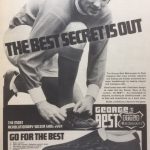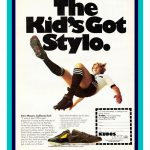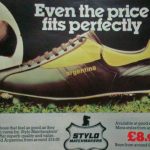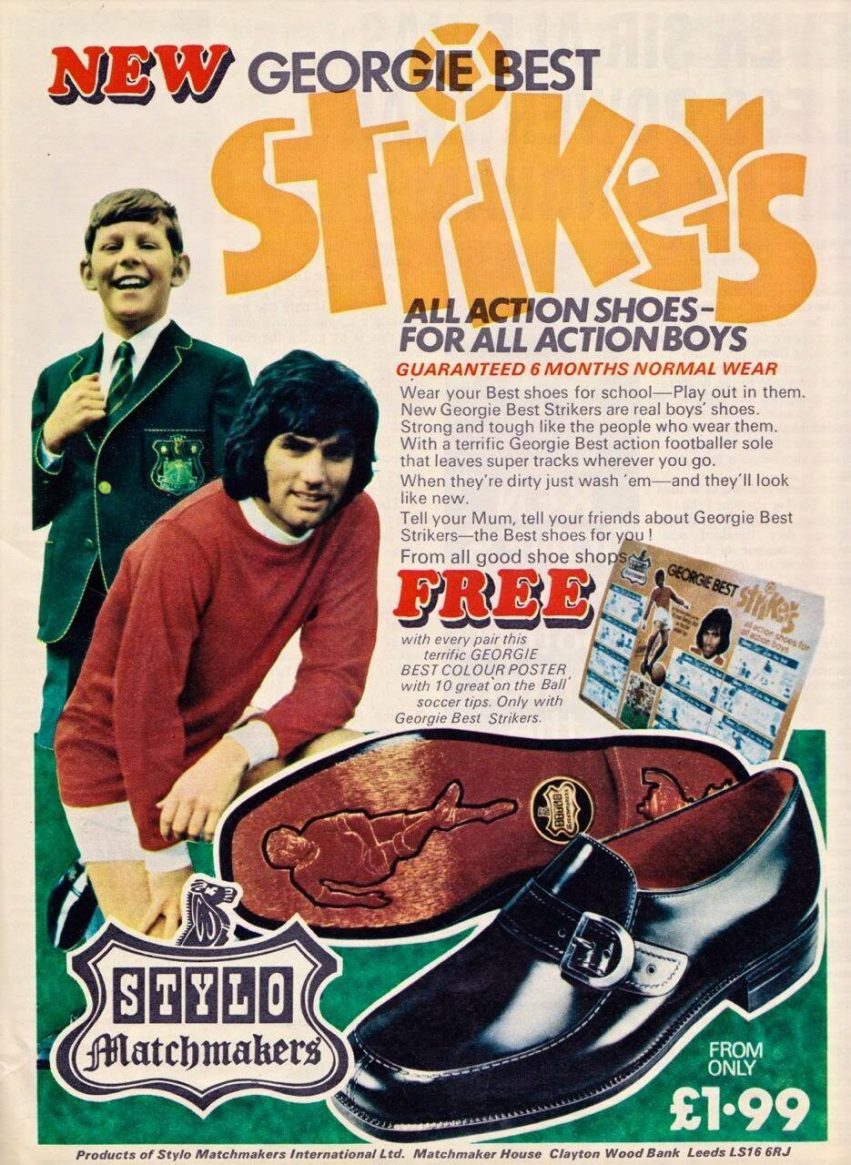The Football maybe…but the Boot’s weren’t as good….
Everyone seems to have rose coloured glasses on these days.
But let’s be honest, nostalgia isn’t what it used to be.
The Rise of Stylo in Football
During the late 1960s and early 1970s, the football boot market was dominated by established names like Adidas and Puma. Into this competitive landscape came Stylo Matchmakers, a British company aiming to make its mark with bold marketing campaigns and endorsements from high-profile players, including George Best. Their boots stood out for their flashy designs, white stripes, and emphasis on being something new and exciting in a market that often leaned conservative.
Bold Marketing, Questionable Product
Stylo quickly earned attention by signing top players, especially Best, who embodied youth culture and flair at the time. The boots were marketed as revolutionary, stylish, and built for action. However, despite the marketing glitz, many who actually played in them found the boots less than ideal. Complaints soon surfaced about poor durability, uncomfortable fit, and a lack of performance compared to better-engineered rivals.
A Heavy and Stiff Boot
One of the most common criticisms of the original Stylo boots was that they were stiff and heavy. Whereas Adidas and Puma were experimenting with lighter leather and designs that allowed for better ball control, Stylo’s construction was often clunky. Players found it harder to move with agility, and the boots could feel cumbersome in fast-paced matches. The weight distribution didn’t favor nimble footwork, which ironically clashed with the company’s association with flair players like Best.
Durability Issues
On top of the discomfort, many accounts describe the boots as wearing out quickly. Stitching and soles were known to give way after relatively little use, particularly under wet or muddy conditions common in British football. The promise of toughness in advertising didn’t always match reality. For players who needed reliable equipment week in and week out, this lack of longevity was a serious drawback.
Style Over Substance
Stylo’s boots undeniably looked good. With sleek lines and bold branding, they appealed to younger players who wanted to emulate their heroes. Yet, the company seemed to prioritize image over engineering. The boots worked as a fashion statement but fell short on the pitch. This reputation as a “show boot” rather than a true performance tool earned Stylo a mixed legacy among those who actually laced them up for competitive football.
The Legacy of a Flawed Icon
Today, Stylo boots are remembered with a degree of nostalgia, partly because of their association with George Best and the swinging era of football style. Collectors and enthusiasts see them as cultural artifacts rather than practical gear. While many former players will tell you they were horrible shoes to play in, Stylo’s boldness in marketing and design carved out a unique place in football history. They may not have lived up to their hype on the field, but off it, they left a lasting mark as a reminder of when football boots began to cross into the world of fashion and celebrity.
While Stylo focused heavily on marketing glitz, rivals like Adidas and Puma were investing in genuine innovation. Adidas in particular developed lighter leathers, screw-in studs, and more ergonomic boot shapes that improved both comfort and performance. Puma’s King boot, famously worn by Pelé, offered supple kangaroo leather and a snug fit that gave players greater control and feel for the ball. In comparison, Stylo boots felt stiff, heavy, and outdated almost as soon as they hit the market, leaving serious players frustrated by the gulf in quality.
What really sealed Stylo’s reputation was that professionals who endorsed the brand—like George Best—were often rumored to play in customized boots made by Adidas or Puma but rebranded with Stylo markings. Meanwhile, everyday players had to make do with the mass-produced Stylo models, which lacked the craftsmanship of their German competitors. The difference was stark: Adidas and Puma provided boots that elevated performance, while Stylo delivered footwear that looked sharp but quickly fell apart under the rigors of regular football.





Comments are closed.